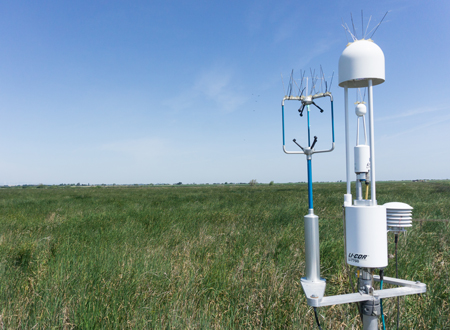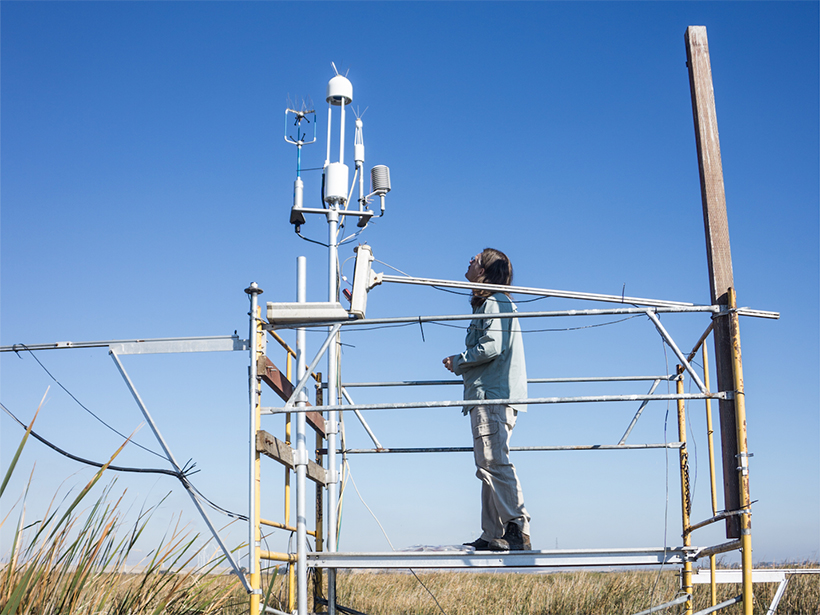Source: Journal of Geophysical Research: Biogeosciences
The Sacramento–San Joaquin Delta, a vast freshwater tidal marsh located about 65 kilometers northeast of San Francisco, once harbored abundant birds, shellfish, salmon, elk, and other wildlife that sustained local Native American populations. By the late 19th century, however, settlers had built levees and drained most of the delta for farming.
The region’s role as a central hub of California’s water supply has led to decades of challenges and legal controversy over land use in the delta, but today, restoration efforts are under way to restore wetlands in parts of the 2,800-square-kilometer delta. These restoration efforts provide a unique opportunity to study the climate effects of this land use transition.
Previous research has suggested that wetland restoration efforts could help mitigate the effects of climate change. However, most prior studies have focused on changes in greenhouse gas flux resulting from such efforts while neglecting biophysical impacts, such as changes in heat exchange with the atmosphere and changes in reflectance of solar radiation.

In a new study, Hemes et al. investigated whether such physical impacts might enhance or diminish the benefits of wetland restoration. The researchers analyzed heat flux and air flow data collected from 2015 through 2017 by instruments installed on towers above three restored wetlands and one agricultural site in the delta, where several of California’s major rivers meet and mingle before entering San Francisco Bay.
The researchers found that the restored wetlands absorbed more solar radiation than the crop site did because of a greater abundance of dark water surfaces and the physical properties of the dominant tule and cattail vegetation.
Despite the enhanced available energy, during the growing season, average daytime surface temperatures in the wetlands were up to 5.1°C cooler than nearby cropland surface temperatures. Analysis suggested that the tall, rough canopy structure of the tule and cattail in the wetlands, along with tracts of open water between the patches of wetland vegetation, delayed heat exchange with the atmosphere, keeping temperatures down. This cooling effect could help counteract rising temperatures on a local scale.
The new findings highlight the importance of accounting for biophysical changes resulting from wetland restoration and other land use changes. Future studies could examine these effects on a larger scale and with varying types of wetlands and crops. Such research could help ensure that unintended negative consequences do not arise from emerging programs that compensate landowners and farmers for low-emission land use practices. (Journal of Geophysical Research: Biogeosciences, https://doi.org/10.1029/2018JG004494, 2018)
—Sarah Stanley, Freelance Writer
Citation:
Stanley, S. (2018), Restored wetlands could lower local surface temperatures, Eos, 99, https://doi.org/10.1029/2018EO103203. Published on 17 August 2018.
Text © 2018. The authors. CC BY-NC-ND 3.0
Except where otherwise noted, images are subject to copyright. Any reuse without express permission from the copyright owner is prohibited.

